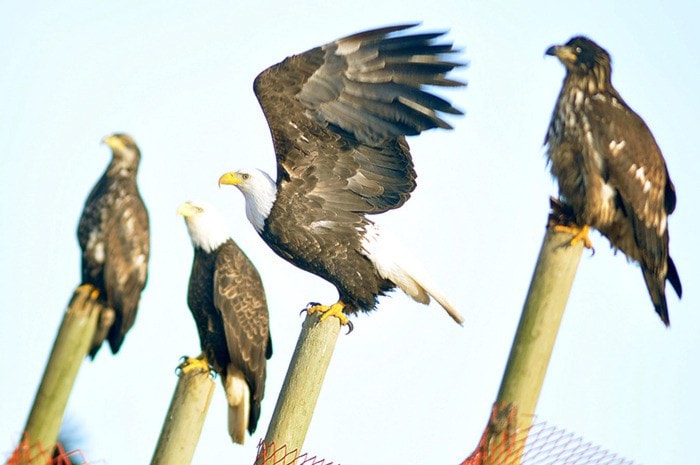During last month’s Vancouver Landfill open house north of Boundary Bay Airport, I had a fun morning helping at the Delta Naturalists Society display.
Hundreds of children took part in bus tours of the landfill and learned about recycling and the environment.
The naturalists’ display spread over four tables and included feathers, bird nests, wasp nests, animal skulls and bones, shells, photographs and colouring sheets. The collection has been gradually augmented by club members over 25 years of doing community events, and the buzz of excited kids around it was a testament to the naturalists’ efforts.
Children had lots of questions and comments, but one, that I heard more frequently than expected, took me by surprise.
“Is it real?” some children asked, as they picked up an owl’s feather or stroked the smooth interior of a Pacific oyster shell.
“Is it real?”
I have volunteered at such community events many times in the past – though not in the last couple of years – yet I do not remember ever before being asked whether a rock, or bones, a shell, or a feather were real. This is surely a sign of how little time children now spend exploring outdoors.
There are many native animals at the landfill in Burns Bog: bald eagles were flying overhead and black-tailed deer browsed in the woodland.
I saw a doe and its new-born fawn near where the tables were set up, and white-crowned sparrows sang from the bushes around us. I wonder how many of the children were aware of them?
The students were polite and enthusiastic. They chatted as they handled the various natural items, though many seemed to know little about them.
The word “endangered” came up, and perhaps they had heard more about nature’s losses than the animals and plants flourishing around them.
Children’s disconnection from the natural world has been written about by a number of authors, notably Richard Louv, yet it is proving challenging to remediate.
Access to nature may be difficult for children. There are lovely natural areas and parks in the Lower Mainland, yet getting to them nearly always involves a car ride.
If gardens and school grounds were wildlife-friendly, they would create a starting place for nature knowledge. There are so many benefits that come from enjoyment of the natural world.
Naturalist mentors are important and BC Nature’s 53 community clubs and NatureKids BC are leading the way. Check out their programs this summer – www.naturekidsbc.ca
Anne Murray, the author of two nature books available in local book stores, writes monthly in the Peace Arch News.
